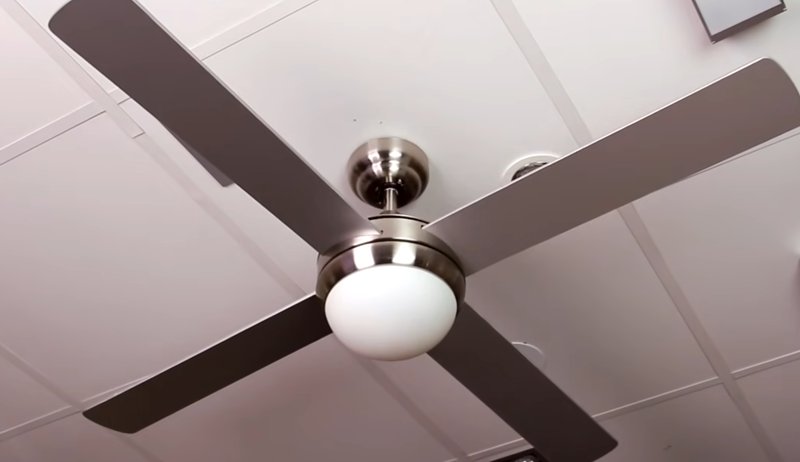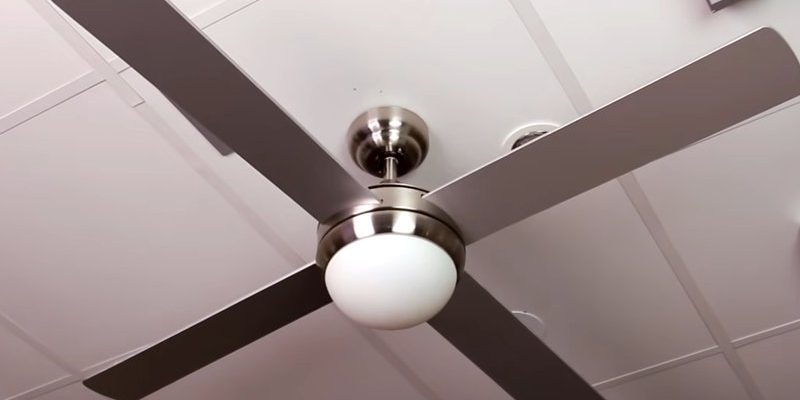
Honestly, this kind of glitch can leave you scratching your head. The fan remote is supposed to bring convenience—a quick breeze at your fingertips, light settings without having to stand up. But when it stops working, it turns into a little plastic mystery box. Whether your fan just ignores its remote entirely or parts of it work (like the light but not the fan), there’s usually a logical reason hiding just below the surface.
Harbor Breeze remotes are pretty standard as far as ceiling fan controllers go. They use a simple radio frequency (RF) signal to talk to the fan’s receiver. That means there’s a little bit of pairing magic in play, but also—like anything with batteries and wireless signals—a few things that can go wrong. Let me break it down so you can figure out exactly what’s going on, and how to get your cool breeze back.
Check the Batteries in Your Harbor Breeze Remote
Let’s start with the obvious, because nine times out of ten, it’s the simple things that trip us up. If your Harbor Breeze ceiling fan remote isn’t working, the very first thing to check is the batteries. I know, I know—it sounds basic, but even the cleverest folks get stumped by a dead battery.
Here’s the thing: even new batteries can be duds, or maybe you haven’t changed them in months. Pop open the battery compartment, usually on the back of the remote, and take a look. Are the batteries corroded? Are they installed the right way up? Replace them with fresh ones, making sure to match the + and – symbols. Sometimes, you need to press the batteries in just a little so they make snug contact.
If your remote has an indicator light (often a tiny LED that flashes when you press a button), see if it’s lighting up. No light usually means no power. If it lights up but still doesn’t work, keep reading—there’s more detective work ahead.
Reset or Re-Sync Your Harbor Breeze Remote and Fan
Let me explain how the remote and ceiling fan actually “talk.” Inside the fan’s canopy (the part attached to your ceiling) is a little receiver. The Harbor Breeze remote sends signals to that receiver when you want to turn the light on, change fan speeds, or switch everything off. Sometimes, that “handshake” between the remote and receiver gets lost—especially after a power outage or if you’ve recently changed the batteries.
If your Harbor Breeze fan remote was working and suddenly stopped, it may need to be reset or paired again. Here’s what usually works:
- Turn off the fan’s power at the wall switch or circuit breaker. Wait about 30 seconds to fully cut power to the receiver inside the fan.
- Turn the power back on. Within 30 seconds, press and hold the ‘Fan’ button (or the ‘Sync/Pair’ button, if your remote has one) for about 5–10 seconds.
- Wait for a beep, flashing light, or the fan blades to start moving. That’s the universal “I heard you!” from the fan’s receiver.
Every model is a little different, so check your Harbor Breeze fan manual if you still have it. The goal is to reset both the fan and the remote so they’re speaking the same language again.
Sometimes, just flipping the breaker off and on gives the system the kick it needs. Think of it as a digital handshake—a fresh start.
Inspect for Remote Code or Dip Switch Issues
You might be wondering, “What’s a dip switch, and why should I care?” Well, most Harbor Breeze ceiling fans use a set of tiny switches—called dip switches—to match the remote’s signal to the fan receiver. These are usually hiding under the remote’s battery cover and inside the fan’s canopy.
If your fan and remote aren’t set to the same code, they’ll ignore each other like two radios on different channels. Here’s how you can check:
- Remove the remote’s battery cover. Look for tiny switches (usually a bank of 4 toggles labeled 1–4).
- Turn off power to your fan. (Safety first!) Open the canopy to access the receiver.
- Compare the dip switch settings. The switches in both places must match exactly for the remote to work.
If you find they’re different, just flip the switches so they match. Tiny, precise work—but it’s the secret handshake of the ceiling fan world. Reset the power, and try the remote again.
If you recently bought a new remote or swapped out the receiver, the dip switch settings are almost always the culprit.
Look for Interference or Blockages
Let’s get a bit science-y. Harbor Breeze remotes send radio waves, not infrared beams like your old TV remote. That means you don’t need direct line of sight, but those signals can still get blocked or scrambled.
Common sources of interference:
- Thick walls, mirrors, or metal ductwork between the remote and fan
- Other RF devices—like Wi-Fi routers, baby monitors, or even other ceiling fans nearby
- Heavy electrical appliances close to the fan or remote
You might notice the remote works in some spots but not others. Try standing closer, or using the remote from a different angle. Move any electronics or large metal items out of the way if you can.
Some Harbor Breeze remotes are more sensitive than others. If interference is a constant battle, you might consider changing the dip switch code to something less likely to clash with neighbors’ devices. Just make sure both the remote and receiver are changed to the new code.
Check for Receiver or Remote Damage
Physical damage often goes unnoticed. Maybe you dropped the remote one too many times, or the ceiling fan’s receiver got zapped during a storm. If you’ve tried fresh batteries, re-synced everything, and checked the dip switches—but your Harbor Breeze ceiling fan remote still isn’t working—hardware damage might be to blame.
Here’s what to look for:
- Cracked remote casing, rattling sounds, or broken buttons
- Batteries leaking or corroded contacts inside the remote
- A burnt smell or discoloration inside the fan’s canopy
If you suspect the remote is at fault, you can often buy a universal Harbor Breeze remote. They’re designed to work with most models, but check compatibility before buying. Swapping out the receiver usually involves a bit more DIY—it’s doable, but only if you’re comfortable with basic electrical work. Otherwise, a professional can handle it for you.
Try a Universal Remote or Wall Control Alternative
Honestly, sometimes you just want to skip the hassle and get it working again—fast. If you’ve tried everything, and your Harbor Breeze ceiling fan remote still refuses to cooperate, a universal remote or a compatible wall control can be a lifesaver.
Universal remotes for ceiling fans are available at most hardware stores. They almost always include a new receiver, so you’re swapping out both the “brain” in the fan and the handheld remote. The dip switch process is roughly the same: match up the codes, pair the new remote and receiver, and you’re good to go.
Some Harbor Breeze ceiling fans also allow you to install a wall control, which gives you classic light switches with fan speed buttons. This is especially handy if you always lose the remote (we’ve all been there), or if you want a backup.
Upgrading to a universal kit can breathe new life into an old fan. It’s like giving your ceiling a mini smart-home makeover.
Troubleshooting Specific Harbor Breeze Remote Models
Not all Harbor Breeze remotes are created equal. Some have extra features—like dimmers, timers, or even Bluetooth connectivity. Troubleshooting might look a little different if you have, say, the Harbor Breeze A25, UC7078T, or a smart-enabled model.
For standard models: Stick to batteries, dip switches, and basic pairing steps.
For advanced models: Check for app connectivity, update firmware if available (for smart remotes), and consult your manual for special reset sequences. Some remotes come with “learning” buttons or unique pairing procedures.
If the buttons stick, or only specific functions work, open up the remote (gently!) and clean the contacts with a cotton swab and a bit of rubbing alcohol. Dust and grime can sometimes block a button’s internal contacts, causing the remote to act glitchy.
Here’s a little story: I once spent 30 minutes troubleshooting a remote, only to discover a tiny speck of chocolate (don’t ask) gummed up the “fan speed” button. Cleaned it out, and—voilà!—working like new.
When to Call for Professional Help
There comes a point where enough is enough. If you’ve checked batteries, dip switches, pairing, interference, and replaced the remote—and your Harbor Breeze ceiling fan remote still won’t work—the issue might be deeper in the wiring. Or maybe the receiver is fried in a way you can’t see.
Here’s when to call a pro:
- You’re not comfortable opening up the fan canopy or dealing with electrical wires
- There’s visible damage, or you smell burning from the ceiling fan
- The fan or light works from a pull chain or wall switch, but not with any remote—even a new one
An electrician or experienced handyman can diagnose issues with the wiring, receiver, or even replace parts if needed. Sometimes it’s safer (and faster) than troubleshooting endlessly on your own.
Getting Your Harbor Breeze Fan Remote Working Again
It’s easy to get frustrated when your ceiling fan remote just won’t cooperate. Yet, most Harbor Breeze fan remote issues boil down to simple fixes: dead batteries, a lost pairing handshake, mismatched dip switches, or a remote that’s taken too many hits. Take your time, go step by step, and don’t be afraid to try a universal kit or professional help if you need it.
Once everything’s back in sync, that little remote becomes your best friend again—cool breeze, perfect lighting, and all the comfort you wanted in the first place. Enjoy it!
